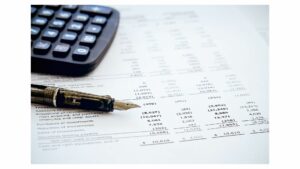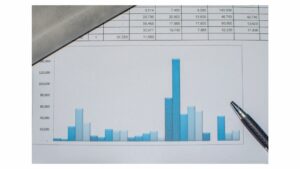In the age of big data, understanding the nuances between data science and data analytics can be crucial for businesses and professionals alike. While both fields revolve around data, they serve different purposes and require distinct skill sets.
Data science dives deep into the complexities of data, employing advanced algorithms, machine learning, and predictive modeling to uncover hidden patterns and insights. On the other hand, data analytics focuses on interpreting existing data to make informed decisions and optimize processes. Knowing the difference can help organizations leverage the right expertise for their needs, driving innovation and efficiency.
Difference Between Data Science and Data Analytics
Data science encompasses a broad range of processes and techniques for extracting actionable insights from raw data. It combines fields like statistics, computer science, and domain expertise. Tasks in data science include data cleaning, data integration, and feature engineering. For example, data scientists might cleanse datasets, integrate various data sources, and engineer features to enhance model predictions.
A critical component of data science is the use of algorithms. These algorithms, often based on machine learning and artificial intelligence, optimize how data is analyzed and interpreted.
Machine learning models can predict future trends, automate processes, and improve decision-making. Examples include classification algorithms for categorizing data and regression algorithms for predicting outcomes.
Overview of Data Analytics
Data analytics concentrates on interpreting existing data to improve decision-making and enhance processes. Specialists in this field primarily use statistical tools and software to analyze and visualize data.
Core Concepts
- Descriptive Analytics – This examines historical data to identify trends and patterns. It includes tools such as dashboards and reports for immediate insights.
- Diagnostic Analytics – This determines the causes of observed patterns and trends. It involves techniques like data mining and correlation analysis.
- Predictive Analytics – This uses historical data to predict future outcomes. Machine learning models and statistical algorithms are common tools here.
- Prescriptive Analytics – This suggests courses of action based on predictive data. It uses complex algorithms and simulations to recommend solutions.
- Data Mining – Mining discovers patterns and relationships within large datasets using algorithms.
- Statistical Analysis – Statistical methods evaluate relationships and test hypotheses.
- Data Visualization – Tools like Tableau and Power BI convert data into graphical representations for easy interpretation.
- SQL – SQL queries retrieve and manipulate data stored in databases.
Overview of Data Science
Understanding the key distinctions between data science and data analytics enhances clarity in leveraging data effectively. Each field has unique objectives and skill sets, fostering innovation and informed decision-making.
Objectives and Goals
 Data Science: Focuses on discovering novel insights and building models that predict future trends using algorithms and machine learning. Data scientists aim to uncover patterns and create automated systems that enhance decision-making processes. These goals align with broad, long-term strategies for innovation and optimization.
Data Science: Focuses on discovering novel insights and building models that predict future trends using algorithms and machine learning. Data scientists aim to uncover patterns and create automated systems that enhance decision-making processes. These goals align with broad, long-term strategies for innovation and optimization.
Data Analytics: Concentrates on interpreting existing data to improve current operations. Data analysts utilize various techniques to extract actionable insights from data, driving immediate decision-making and process improvements. Their primary aim is to provide accurate, timely analysis for specific business questions or challenges.
Skill Sets Required
Data Science: Requires expertise in statistics, computer science, and domain-specific knowledge. Proficiency in programming languages such as Python, R, and SQL is essential. Data scientists must understand machine learning algorithms, data modeling, and advanced analytics techniques. Skills in data cleaning, integration, and feature engineering are also crucial.
Data Analytics: Necessitates strong analytical skills and familiarity with statistical analysis. Data analysts should be adept at using data visualization tools like Tableau and Power BI. Knowledge of SQL for data retrieval and manipulation is important. They must possess the ability to translate data insights into actionable recommendations and effectively communicate results to stakeholders.
Practical Applications in Industry
Recognizing the distinct roles of data science and data analytics allows businesses to harness their full potential. Data science drives long-term innovation through predictive modeling and advanced algorithms, making it invaluable for industries like healthcare, finance, and technology. These sectors rely on data science to develop new products, enhance customer experiences, and predict market trends.
On the other hand, data analytics is crucial for immediate decision-making and operational efficiency. Retailers, manufacturers, and service providers benefit from data analytics by optimizing supply chains, improving customer satisfaction, and streamlining processes. Employing the right expertise ensures that organizations can navigate the complexities of big data, ultimately fostering growth and competitive advantage.



